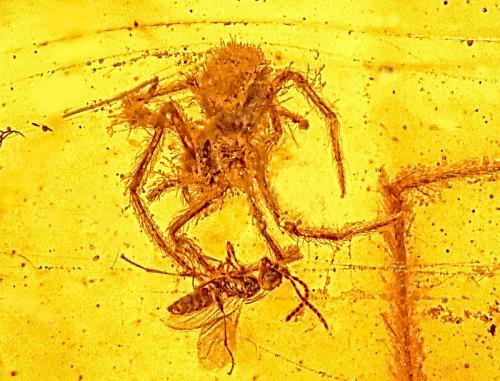In the intricate tapestry of nature, deception often plays a vital role in survival. One of the most fascinating examples of this phenomenon is observed in the behavior of certain spider species that masquerade as ants. Through clever mimicry, these spiders adopt the appearance and behavior of ants to evade predators and secure their place in the ecosystem. In this article, we delve into the captivating world of ant-mimicking spiders, exploring their evolutionary strategies, ecological significance, and recent fossil discoveries that shed light on their ancient origins.
The Evolution of Deception
Nature is replete with examples of organisms employing deception as a survival strategy, and ant-mimicking spiders are no exception. By mimicking the appearance, movement, and even chemical signals of ants, these spiders gain protection from predators that would otherwise prey upon them. This remarkable adaptation has likely evolved over millions of years, driven by the pressures of predation and competition for resources.
The Defense of Deception
Ants possess formidable defenses, including powerful bites, stinging venom, and the ability to mobilize nestmates for collective defense. By imitating ants, spiders gain a level of protection that is unmatched among arachnids. Predators that avoid ants due to their aggressive nature and unpalatable taste are less likely to target ant-mimicking spiders, allowing them to thrive in environments teeming with potential threats.
The Anatomy of Mimicry
Successfully mimicking ants requires more than just a superficial resemblance. Ant-mimicking spiders must adopt specific behaviors and body modifications to convincingly imitate their insect counterparts. This includes positioning their front legs to mimic antennae, altering their body shape to resemble an ant’s segmented anatomy, and even mimicking the chemical cues emitted by ants to avoid detection by predators and prey alike.
Insights from Fossil Discoveries
Recent research led by paleobiologist George Poinar Jr. has uncovered a rare fossil specimen of an ant-mimicking spider preserved in resin. This remarkable find, named Myrmarachne colombiana, provides valuable insights into the ancient origins of ant mimicry in spiders. Despite the challenges of fossil preservation, this discovery offers a glimpse into the evolutionary history of these deceptive arachnids and underscores the importance of studying ancient ecosystems to understand the diversity of life on Earth.
The Art of Mimicry
Mimicry is not merely a passive adaptation but a dynamic interplay between genetic predisposition and environmental cues. While genetic mutations and natural selection play a crucial role in shaping the mimicry abilities of spiders, there is evidence to suggest that cognitive processes and learned behaviors also contribute to their success. By observing and imitating specific ant species within their environment, spiders may refine their mimicry tactics and enhance their survival prospects.
Ecological Implications
The prevalence of ant-mimicking spiders across diverse habitats underscores their ecological significance. By preying upon unsuspecting insects and contributing to pest control, these spiders play a vital role in maintaining ecological balance. Furthermore, their mimicry serves as a testament to the complex interconnections between species and the selective pressures that drive evolutionary innovation.
The world of ant-mimicking spiders offers a fascinating glimpse into the intricate strategies employed by organisms to survive and thrive in challenging environments. From their remarkable adaptations to their ancient origins preserved in fossilized resin, these deceptive spiders continue to captivate researchers and enthusiasts alike. As we unravel the mysteries of nature’s deception, we gain a deeper appreciation for the resilience and ingenuity of life in all its forms.
